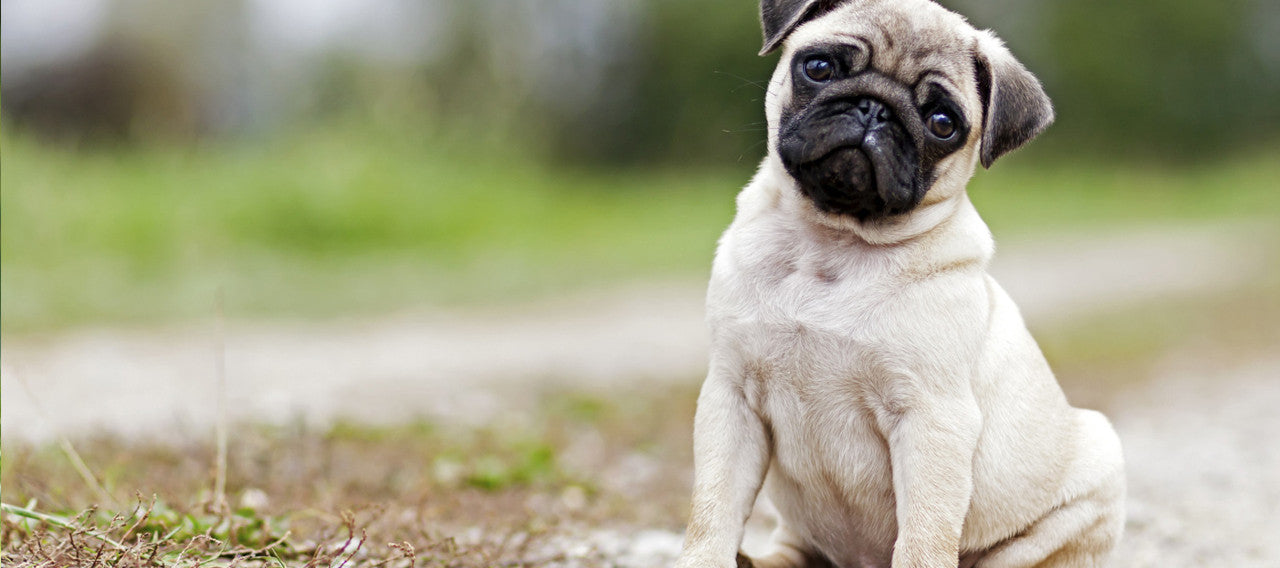Your Cart is Empty

The toy group is made up of breeds that are amongst the smallest of all breeds. The name Toy is in some ways misleading because some of the breeds tend to appear to be animated playthings, but their temperaments suggest that they are anything but that. Many of the breeds in this category are quite ancient, attesting to the value people have long placed on dogs for the sake of companionship and adornment. Known as the favourites of the courts and noble families, they were kept as small lap dogs and companion dogs.
Being an exception in the Toy Group, the Pug is the only breed in the group to be descended from mastiff forebears. Known as an ancient breed, the Pug was an admired pet in the Buddhist monasteries in Tibet. The name Pug derives from the Latin word Pugnus meaning fist, as his head resembles a clenched fist, and from the marmoset “Pug” monkeys which were popular pets in the 18th century which the dog somewhat resembles. In China, their facial wrinkles were an important breed feature which were referred to the “prince mark” when it resembles the Chinese character for “prince”. The Pug came to Holland in the 16th century by way of the Dutch East India Trading Company where they became popular and recognized as the official dog of the House of Orange. Later, in 1885, the American Kennel Club (AKC) recognized the breed and in 1886, several Pugs were brought to England from China. Since then, he has remained popular as both a pet and a show dog.
Standing up to 10-11 inches and weighing between 14 to 18 pounds, the Pug is robust and stocky with a tail that is tightly curled and twisted on the top of his back. With a black mask, he wears a short, smooth and glossy coat, which comes in fawn, apricot, silver and black. Having a large head with soft, small high set ears, he has clearly defined wrinkles and large, dark prominent eyes with a short, deeply wrinkled muzzle. Being a short nosed breed, he has the tendency to snort and rumble.
The Pug is amiable, playful, and a confident companion being extremely tough and opinionated, but hardly aggressive. He can be stubborn and headstrong but he is pleasant and generally willing to please. Affectionate with his human family, overall he makes an amusing and rewarding companion with great charm and intelligence.
Being strong-willed, the Pug is not easy to train. However, it is worth the effort as he makes an adaptable and sociable companion and a great family dog. He needs daily exercise, either in the form of a lively game or a moderate walk. Due to their proneness to obesity, their feeding requirements are kept minimum. He does not adapt well in hot weather due to his short nose. It restricts his breathing and causes wheezing and snoring. His smooth coat needs only occasional brushing to remove dead hairs, however, the wrinkles require regular cleaning to prevent skin infections.
Having a life expectancy between 12 to 15 years, the Pug has genetic health problems which are unique to his breed. Apart from obesity, the Pug is prone to:
His physical appearance also causes issues. If his facial wrinkles are not regularly cleaned, he can develop skin fold dermatitis which is a skin infection caused by moisture and bacteria that is trapped within the deep folds of skin. Also, because he can have issues with his breathing, he can be sensitive to anaesthesia.
Being a dog with a strong character in such a small and compact body, the Pug is very easy to fall in love with. He is perfect for those who have the patience to train him, walk him, and brush him on a regular basis. His health can be demanding, but with a little love, this perfect breed will be a happy and healthy dog.